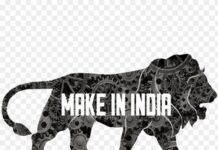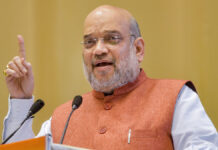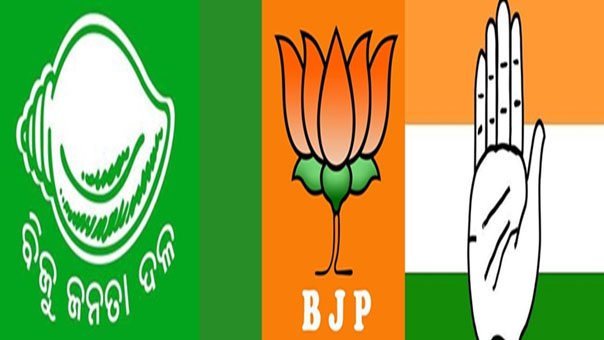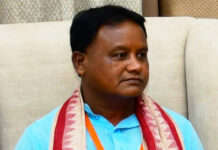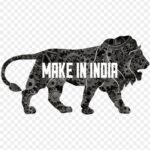Several opinion polls confirm that Modi’s popularity remains intact, further fueling his party’s dominance. Most of the opinion polls consistently show that the National Democratic Alliance (NDA) would handily capture a majority of seats in the Lok Sabha.
Just months ahead of the LS polls, the BJP appears to have an edge over its opposition combine. After the verdicts from five state assembly elections declared two months back, the eyes of 1.4 billion Indians turn to the country’s general elections, expected to be held between April–May 2024.
The results of the 5 state Assembly elections indicate that the Bharatiya Janata Party is the clear front-runner. This advantage is principally driven by Prime Minister Narendra Modi’s enduring popularity. 78% of Indians surveyed in late November approved of Modi’s job performance. It is even more remarkable that Modi’s approval has been consistent since August 2019.
Several opinion polls confirm that Modi’s popularity remains intact, further fueling his party’s dominance. Most of the opinion polls consistently show that the National Democratic Alliance (NDA) would handily capture a majority of seats in the Lok Sabha.
However, elections are popular demonstrations of the will of the electorate, not preordained coronations. As the road to Lok Sabha 2024 begins, five issues are worth watching – the waning predictive power of state elections, the challenge of Opposition coordination, the battle for backward castes, the arms race of competitive welfarism, and the emergence of foreign policy as a mass issue.
Earlier, we detected an unmistakable relationship between state and national elections. Candidates that state ruling parties put forward in national elections fared well. This correlation has broken down in recent years. The Congress party swept the December 2018 assembly elections in Chhattisgarh and bested the BJP in both Madhya Pradesh and Rajasthan. But this advantage proved short-lived. In the parliamentary result, the BJP dominated the Congress in all three states less than six months later. In the 2018 Telangana state polls, the Telangana Rashtra Samithi (TRS) won three out of every four seats but could not replicate this in the 2019 elections. However, there is reason to believe that this correlation could be stronger in 2024 than in years past. Modi’s unparalleled popularity means that the electorate has extra incentive to back the BJP in national elections.
In 2014 and 2019, the BJP was aided in its quest to attain a single-party majority by a fragmented Opposition. Many opposition parties were competing with one another as much as they were battling the BJP. The Opposition, after two successive general electoral defeats, seems determined to learn from past failures. In July, more than two dozen opposition parties announced the creation of a new opposition formation, the Indian National Developmental Inclusive Alliance (INDIA). The opposition alliance has talked a good game about collectively taking on the BJP, but it faces an uphill climb.
The BJP alliance earned 45% of the vote in the 2019 elections, suggesting that more than half of the country did not support it. INDIA was expected to offer an alternative. But at present, the INDIA bloc is leaderless. Modi has successfully presidentialised the system over the past decade. In the face of a popular incumbent, INDIA risks being dismissed unless a leader emerges who offers a counterpoint to Modi.
Even if INDI Alliance members overcome their differences, coalition arithmetic may not automatically generate coalition chemistry. For example, in Uttar Pradesh in 2019, BSP and SP joined forces to keep the BJP out of power. But the BJP alliance earned 51% of the vote and bagged 64 (of 80 total) seats, while the BSP-SP alliance won 39% of the vote but just 15 seats.
The BJP positioned itself as the champion of the extremely backward classes (EBCs) and OBCs, which did not reap the benefits promised by the Mandal mobilisation. The BJP’s bet paid off big in 2014, capturing 30% of the OBC votes and earning 43% of the EBC votes. In 2019, the BJP won 41% of the OBC votes and 48% of the EBC votes. The share of the backward vote flowing to the Congress declined sharply.
The issue of caste census has placed the BJP on the back foot. But the BJP does not lack cards to play. It has identified Draupadi Murmu, a tribal lady from Odisha, to occupy the highest office of President of India and Chief Ministers in Chhattisgarh and Madhya Pradesh among the neglected castes.
The impact of welfare schemes on voting behavior may play a vital role. A critical pillar of the Modi government’s economic program consists of “new welfarism,” in which the government has ramped up investments in the public distribution of private goods such as gas cylinders, toilets, bank accounts, and electricity connections. This welfare push has been coupled with the government’s embrace of direct cash transfers, funnelling benefits into household bank accounts.Modi government transferred 7,370 crore rupees in cash to about 108 million beneficiaries in 2013-2014. In 2019-2020, it channelled 2.4 lakh crore rupees in cash to more than 700 million beneficiaries using its DBT platforms, alongside an additional 1.4 lakh crore rupees worth of in-kind benefits. These benefits surged further on account of the pandemic. Voters who received benefits under central government schemes involving cooking gas, bank accounts, and housing were more likely to support the BJP. Modi government recently announced the extension of a pandemic-era scheme to provide free food grains to 800 million citizens for an additional five years.
Elite issues concern subjects such as foreign policy, national security, and trade policy, while mass issues pertain to matters such as inflation, jobs, and welfare benefits. There is a widespread perception that Modi has elevated India’s status on the global stage. The government’s yearlong, high-voltage marketing campaign celebrating its inaugural G20 presidency serves as recognition that the way India is perceived globally is a matter of domestic political salience. Modi has been judged as the most popular global leader.
The question is whether disparate opposition groups can develop a forward-looking political narrative that is simultaneously cogent and flexible. The Opposition has a steep hill to climb, and time is not working in its favour.







